Sumatra Utara
North Sumatra
North Sumatra
Sumatra Utara; Tekun Berkarya, Hidup Sejahtera, Mulia Berbudaya..
North Sumatra; Diligent Work, Prosperous Life, Cultured Noble
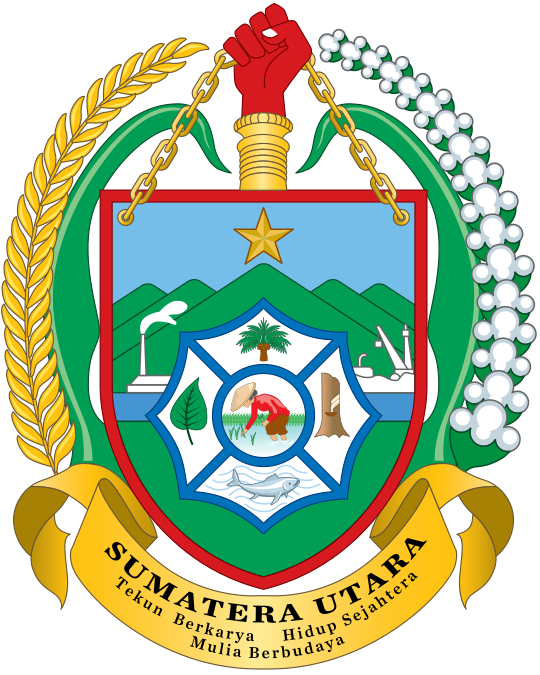 North Sumatra (Indonesian: Sumatra Utara) is a province of Indonesia located on the northern part of the island of Sumatra. Its capital and largest city is Medan. North Sumatra is the fourth most-populous province after West Java, East Java and Central Java. The province covers an area of 72,981 km2. According to the 2020 population census, the province had a population of 14,799,361.
North Sumatra (Indonesian: Sumatra Utara) is a province of Indonesia located on the northern part of the island of Sumatra. Its capital and largest city is Medan. North Sumatra is the fourth most-populous province after West Java, East Java and Central Java. The province covers an area of 72,981 km2. According to the 2020 population census, the province had a population of 14,799,361.
The last seafarers that made it to Sumatra were the Dutch. A government of North Sumatra named Gouvernement van Sumatra with the area covering the whole of the island of Sumatra, was headed by a governor who was based in the city of Medan.
After independence, the first session of the National Committee of Regions (KND), Sumatra was then divided into three sub-provinces namely North Sumatra, Central Sumatra and South Sumatra. North Sumatra province itself was an amalgamation of three administrative regions called Residencies namely: the Residency of Aceh, the East Sumatra Residency, and the Residency of Tapanuli.
With the publication of the Law of the Republic of Indonesia (R.I.) No. 10 Year 1948 on April 15, 1948, it was determined that Sumatra was divided into three provinces, each of which has the right to organize and manage their own household, namely: North Sumatra, Central Sumatra Province, and South Sumatra Province. The date of 15 April 1948 was subsequently determined as the anniversary of North Sumatra Province.
In early 1949, the reorganization of government took place in Sumatra, with the decision of the Government Emergency R.I. No. 22 / Govt / Emergency Government on May 17, 1949, which abolished the post of Governor of North Sumatra. Furthermore, the Government Emergency Decree R.I. on December 17, 1949, established the Province of Aceh and Tapanuli Province / East Sumatra. Then, with a Government Regulation in lieu of Law No. 5 Year 1950 on August 14, 1950, such provisions were lifted and reshaped North Sumatra Province.
Act R.I. No. 24 of 1956, promulgated on December 7, 1956, established an autonomous Aceh Province, independent of the Province of North Sumatra.
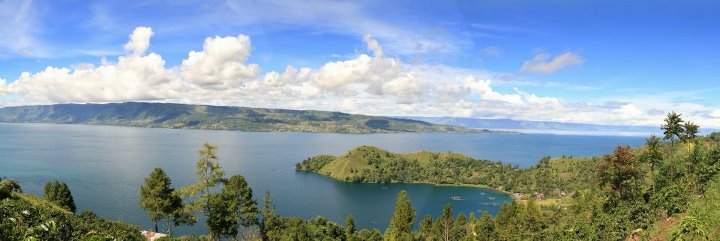 Geography
Geography
The province of North Sumatra stretches across the island of Sumatra between the Indian Ocean and the Strait of Malacca. It borders Aceh province on the northwest and Riau and West Sumatra provinces in the southeast. It has an area of 72,981 km2. The province contains a broad, low plain along the Strait of Malacca on which the provincial capital, Medan, is located. In the south and west, the land rises to the mountain range that runs the length of Sumatra; the mountains here are dominated by Lake Toba, formed from the caldera of an ancient volcano. Several large islands in the Indian Ocean off the west coast of Sumatra are currently part of North Sumatra, most notably Nias Island and the Batu Islands.
 There are 419 islands in North Sumatra province. The outer islands include the island of Simuk (Nias), and the island of Berhala in the Strait of Sumatra (Malacca). The Nias archipelago consists of the main island of that name and other smaller islands in the vicinity, located off the coast of western Sumatra in the Indian Ocean. The administration center is located in Gunung Sitoli.
There are 419 islands in North Sumatra province. The outer islands include the island of Simuk (Nias), and the island of Berhala in the Strait of Sumatra (Malacca). The Nias archipelago consists of the main island of that name and other smaller islands in the vicinity, located off the coast of western Sumatra in the Indian Ocean. The administration center is located in Gunung Sitoli.
The Batu Islands consist of 51 islands including four major islands: Sibuasi, Pini, Tanahbala, Tanahmasa. Pulautelo is the administrative center on the island of Sibuasi. The Batu Islands are located to the southeast of the island of Nias. Other islands in North Sumatra are Imanna, Pasu, Bawa, Hamutaia, Batumakalele, Lego, Masa, Bau, Simaleh, Makole, Jake, and Sigata, Wunga.
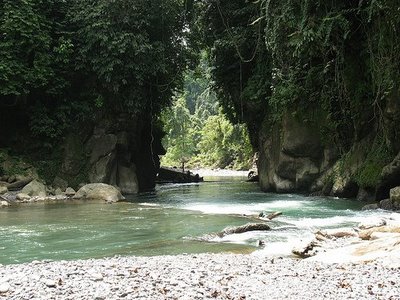 In North Sumatra, there are currently two national parks, the Gunung Leuser National Park and Batang Gadis National Park. According to the Ministerial Decree, No. 44 of 2005, the forest area in North Sumatra today covers 3,742,120 hectares (ha), which consist of a Natural Reserve Area / Natural Conservation Area covering an area of 477,070 ha, 1,297,330 ha of protected forest, limited production forest 879,270 ha, Permanent production forest 1,035,690 ha and production forest that can be converted covering 52 760 ha.
In North Sumatra, there are currently two national parks, the Gunung Leuser National Park and Batang Gadis National Park. According to the Ministerial Decree, No. 44 of 2005, the forest area in North Sumatra today covers 3,742,120 hectares (ha), which consist of a Natural Reserve Area / Natural Conservation Area covering an area of 477,070 ha, 1,297,330 ha of protected forest, limited production forest 879,270 ha, Permanent production forest 1,035,690 ha and production forest that can be converted covering 52 760 ha.
But this figure character is de jure alone. Because as a de facto , the existing forests is not covering it anymore. Happens a lot of damage due to encroachment and illegal logging. So far, over 206,000 ha of forest in Sumatra has experienced changes in function. Has been turned into plantations, transmigration. And of the total, as many as 163,000 ha of plantations and 42,900 ha for transmigration area.
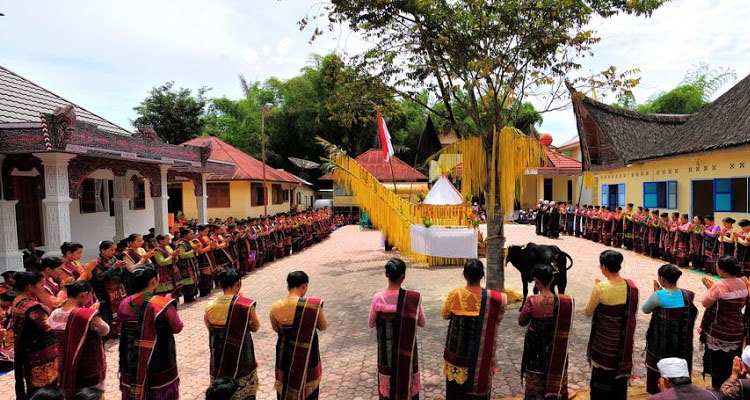 Demographics
Demographics
North Sumatra recorded a population of 12,985,075 in the 2010 national census, making the 4th most populous province in Indonesia, with a sex ratio of 99.59 men per 100 women. The 2015 Intermediate Census gave a total of 13,923,262, while the 2020 Census gave a total of 14,799,361.
North Sumatra is a multi-ethnic province. The Malay people are regarded as the native people of this province. The Javanese reside around Deli Serdang Regency, including Medan, while the west coast of the province is mainly inhabited by Pakpak, Mandailing and Minangkabau people. The central region around Lake Toba, is predominantly inhabited by Bataks.
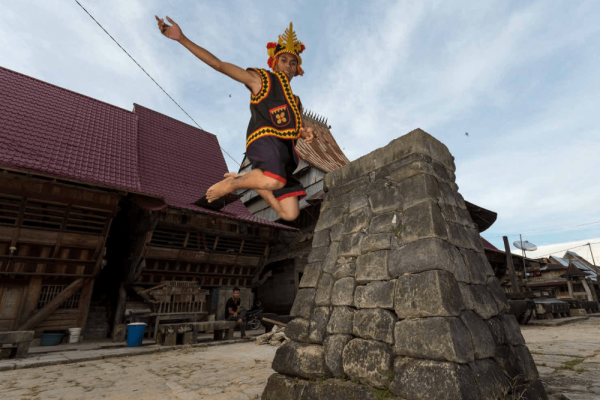 The Nias people reside mostly in Nias Island and the surrounding islands. With the opening of tobacco plantations in East Sumatra during the Dutch East Indies era, the colonial government employed many contract labourers for plantations. The newcomers were Chinese refugees, who were welcomed in Sumatra.
The Nias people reside mostly in Nias Island and the surrounding islands. With the opening of tobacco plantations in East Sumatra during the Dutch East Indies era, the colonial government employed many contract labourers for plantations. The newcomers were Chinese refugees, who were welcomed in Sumatra.
Bataks make up 44.95% out of the population, including Batak Karo and Mandailing. The Javanese come second with 30.62%, the Malays add up to 5.92% and the ethnic Chinese comprise 5.75%. Nias people make up around 4.10% and the rest are Minangkabau (2.66%), Acehnese (1.27%), ethnic Indian (0.80%) and other ethnic groups (1.15%)
The distribution of the tribes, clans, and ethnic groups in North Sumatra is as follows: Batak Toba, throughout North Sumatra; Batak Karo, mostly in Karo Regency, and Deli Serdang; Batak Mandailin, East coast and west coast region; Batak Pakpak, majority in Dairi Regency; Malay, around the east coast; Nias, mostly in Nias Island, with a small population around the west coast; Javanese, Mostly resided east coast area, majority in Medan, Deli Serdang, Serdang Bedagai and Labuhan Batu; Chinese Indonesian, urban areas such as Medan, Deli Serdang, Binjai, Tanjungbalai and Pematangsiantar; Minangkabau people, mostly in Medan and Mandailing Natal; Indian Indonesian, several districts around Medan, Binjai and Deli Serdang; and Acehnese people, Medan, Binjai up to northern parts such as Langkat.
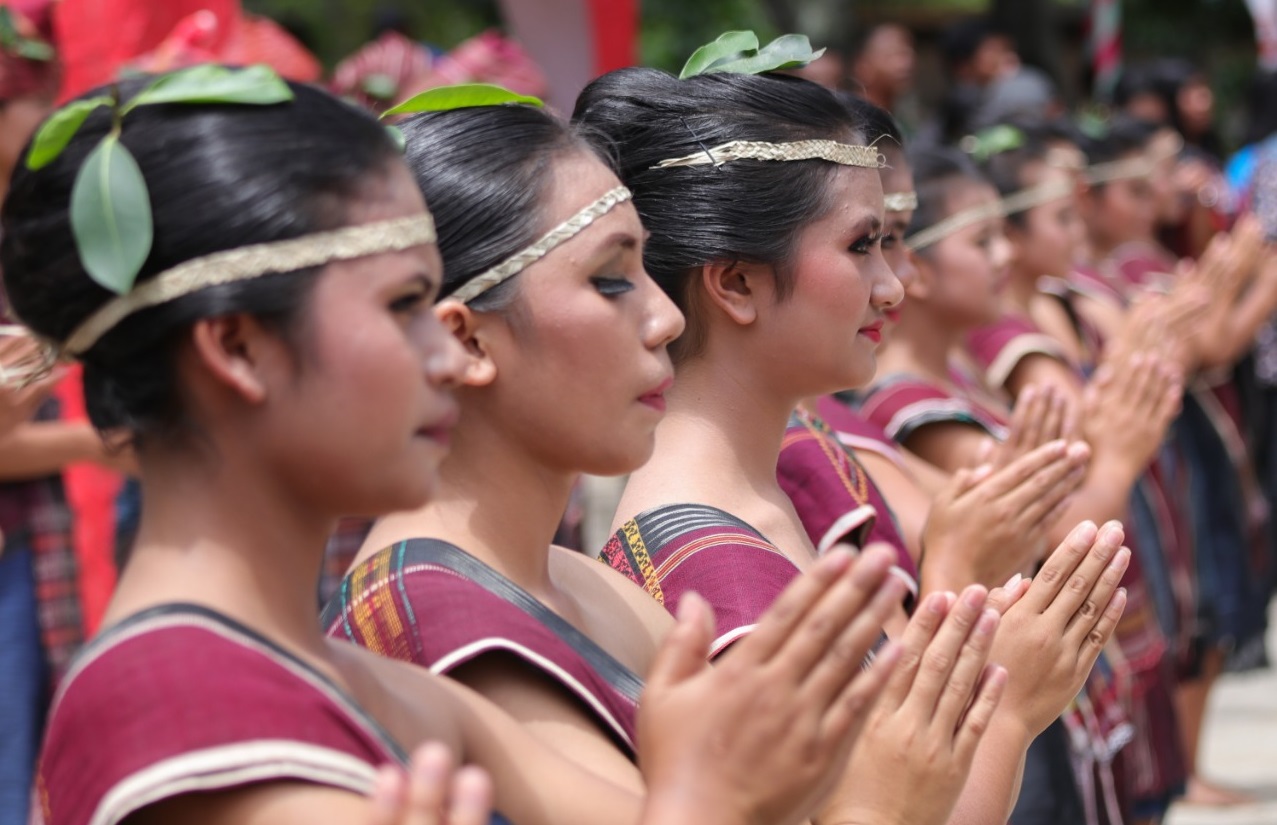 Languages
Languages
In general, the widely used language is Indonesian. The Malays around Deli Serdang and Langkat mostly speak Malay language, which is similar to Peraknese Malay language. The Javanese people, especially around rural and plantation areas, use Javanese in daily conversation, while the urban Javanese mostly speak Indonesian.
The Batak people speak Bataknese, which is divided into four dialects (Silindung, Samosir, Humbang and Toba), while Batak Karo people use Karo language and the Batak Mandailing people around South Tapanauli, Padang Lawas and Mandailing Natal speak Mandailing language. Nias language is spoken among Nias people.
 Mostly ethnic Chinese in North Sumatra are fluent in Hokkien with Zhangzhou dialect mixed with Malay/Bataknese/Indonesian words, while for Chinese around Labuhan Batu area using Quanzhou dialect that has similarity with Bagansiapiapi Hokkien. The small Teochew and Hainanese speakers are also exist. The ethnic Indian people in Medan speak Tamil with a some Punjabi speakers among Punjabis. The Acehnese people speak Aceh and Gayo language.
Mostly ethnic Chinese in North Sumatra are fluent in Hokkien with Zhangzhou dialect mixed with Malay/Bataknese/Indonesian words, while for Chinese around Labuhan Batu area using Quanzhou dialect that has similarity with Bagansiapiapi Hokkien. The small Teochew and Hainanese speakers are also exist. The ethnic Indian people in Medan speak Tamil with a some Punjabi speakers among Punjabis. The Acehnese people speak Aceh and Gayo language.
 Religion
Religion
More than 95 percent out of all residents are either Muslim or Christian; the remainder are Buddhist, Hindus, or follow folk religions such as Confucian, Parmalim, and Taoist. These are the recognized religions of North Sumatra:
Islam: especially embraced by the Malays, Minangkabau, Javanese, Aceh, Mandailing, Angkola, and partly Toba, Karo, Simalungun and Pakpak Christianity (Protestantism and Catholicism): especially embraced by Batak Toba, Karo, Simalungun, Nias, Pakpak and partly Batak Angkola, Chinese and Indian Hindu and Sikh: especially embraced by Indian in urban areas, there are also small Batak Karo people that practising Hindu in rural areas Buddhist: especially embraced by Chinese in urban areas Confucian, Taoist and Chinese religion: 99 percent embraced by the Chinese Traditional religion such as Parmalim/Pemena: embraced by most of the Batak tribe centered in Huta Tinggi, Laguboti district, Toba Samosir Regency.
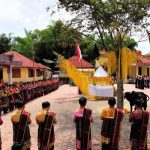

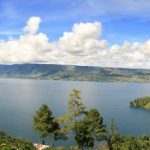
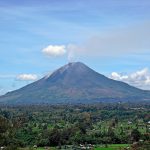
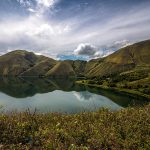
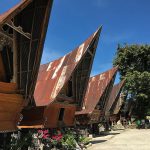
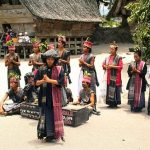

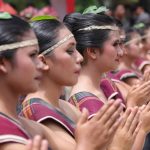













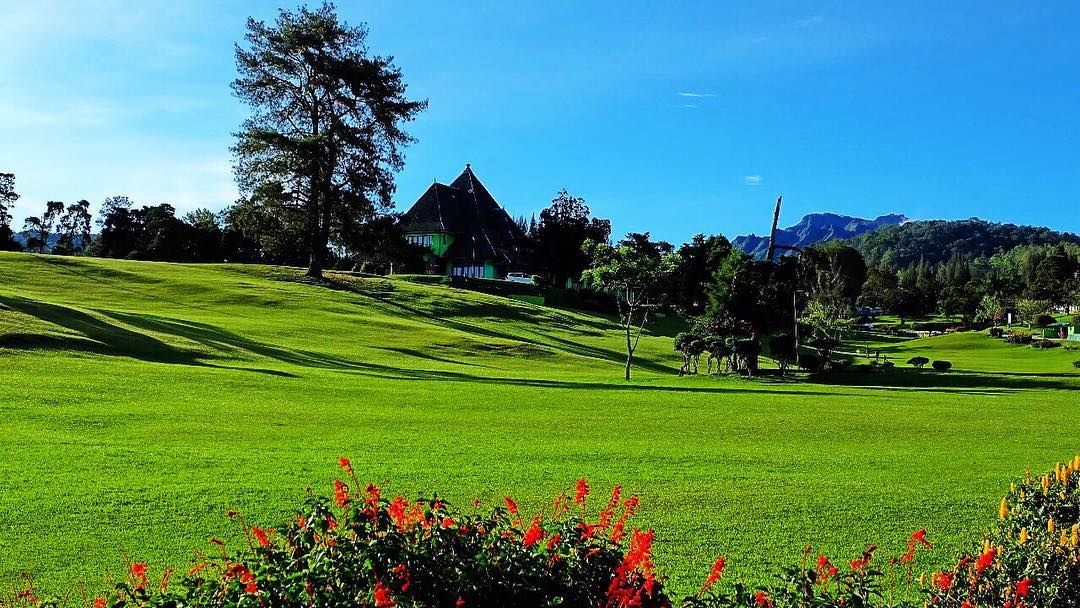 Tourism
Tourism
North Sumatra has lots of travel destinations. According to Ministry of Tourism, North Sumatra is ranked on the top 10 most visited province in Indonesia. There are various kinds of tourist destinations that could be found throughout the province, Berastagi is best known as a hilly place with a cooler temperature as the whole province is in tropical region.
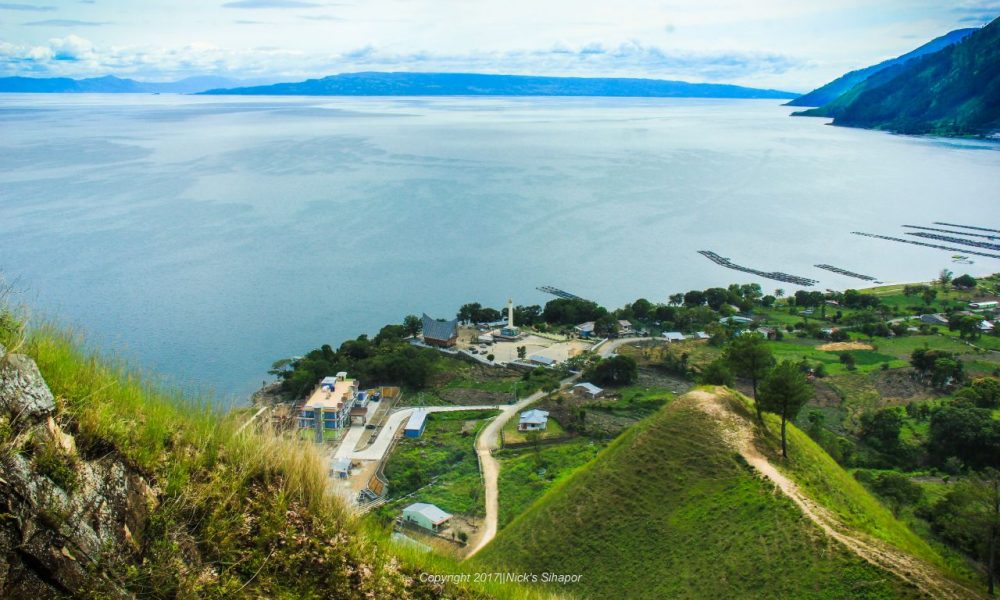 Lake Toba is also a popular travel destination. Toba is a large volcanic lake which has an island inside of it, Samosir Island. Nias Island and other several islands nearby named Batu Islands is a popular spot for surfing. The capital itself, Medan, has many places of interest, mainly for its historical sites. The city is also known for its variety of cuisine.
Lake Toba is also a popular travel destination. Toba is a large volcanic lake which has an island inside of it, Samosir Island. Nias Island and other several islands nearby named Batu Islands is a popular spot for surfing. The capital itself, Medan, has many places of interest, mainly for its historical sites. The city is also known for its variety of cuisine.
The Next list is the most known places of interest in North Sumatra:
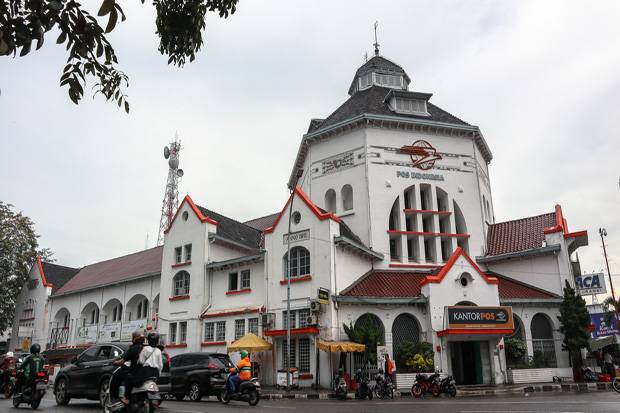 Medan is the capital of North Sumatra province with a diverse crowd population of tribes and religions in unity. There are many historical tourist objects to spot and various great cuisine to taste in Medan.
Medan is the capital of North Sumatra province with a diverse crowd population of tribes and religions in unity. There are many historical tourist objects to spot and various great cuisine to taste in Medan.
Lake Toba is the largest volcanic lake in the world. Located in the centre of North Sumatra, the lake can be reached via Parapat (Simalungun regency), Tongging (Karo regency), and Balige (Toba Samosir regency).
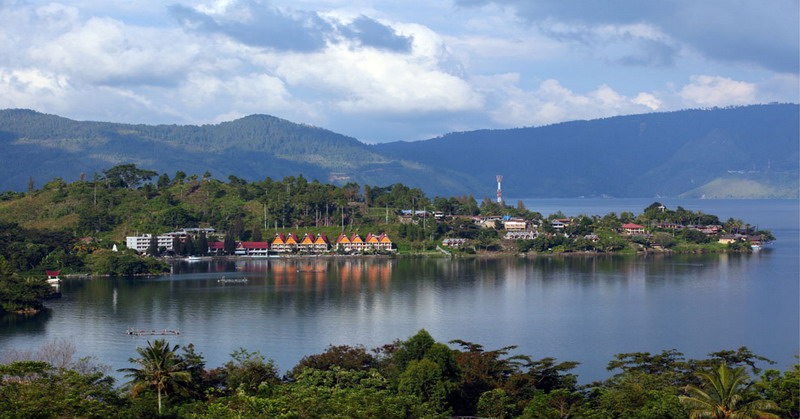 Samosir Island is a volcanic island in middle of Lake Toba, It is a popular tourist destination due to its exotic Batak history and the vistas it offers. The tourist resorts are concentrated in the Tuktuk, Tomok, Simanindo, and Pangururan areas.
Samosir Island is a volcanic island in middle of Lake Toba, It is a popular tourist destination due to its exotic Batak history and the vistas it offers. The tourist resorts are concentrated in the Tuktuk, Tomok, Simanindo, and Pangururan areas.
Bukit Lawang known for the largest animal sanctuary of Sumatran orangutan (around 5,000 orangutans occupy the area), and also the main access point to the Gunung Leuser National Park from the east side.
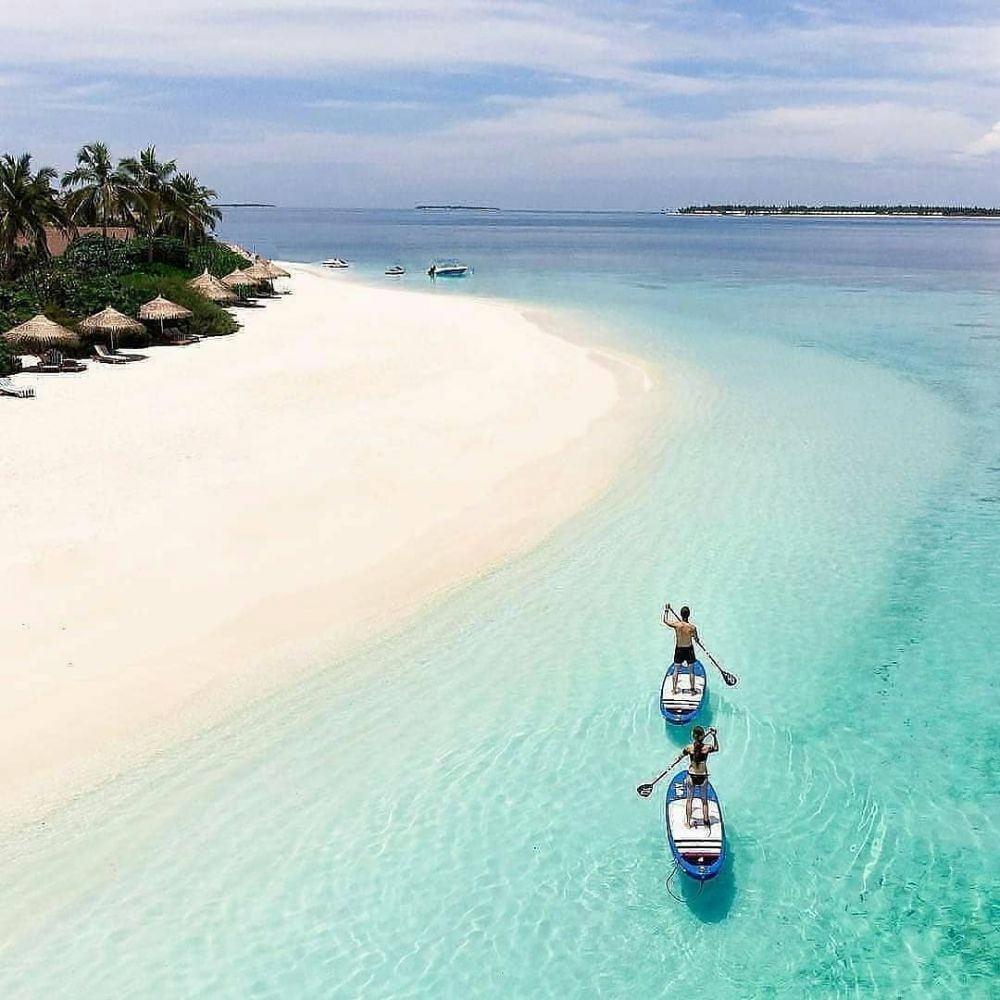 Nias Island is an island off the western coast of Sumatra. Nias is an internationally popular surfing destination where many international surfing competitions are held. The best known surfing area is Sorake Bay, close to the town of Teluk Dalam, on the southern tip. This is enclosed by the beaches of Lagundri and Sorake. Tourists can visit the island by plane from Medan, or by ferry from Sibolga.
Nias Island is an island off the western coast of Sumatra. Nias is an internationally popular surfing destination where many international surfing competitions are held. The best known surfing area is Sorake Bay, close to the town of Teluk Dalam, on the southern tip. This is enclosed by the beaches of Lagundri and Sorake. Tourists can visit the island by plane from Medan, or by ferry from Sibolga.
 Bawomataluo village is a settlement in Teluk Dalam of the South Nias Regency of Indonesia. The village was built on a flat-topped hill, the name Bawomataluo meaning “Sun Hill”, and is one of the best-preserved villages built in traditional style.
Bawomataluo village is a settlement in Teluk Dalam of the South Nias Regency of Indonesia. The village was built on a flat-topped hill, the name Bawomataluo meaning “Sun Hill”, and is one of the best-preserved villages built in traditional style.
Berastagi is a small highland town located 63 kilometres to the south of Medan, and is a popular weekend destination for city dwellers due to its chilled and fresh mountain air.
Dolok Tinggi Raja has a unique soil colour is white because it is located in a limestone hill that resembles snow, and also in the middle of this area there are lakes with hot blue-green coloured water, located in Tinggi Raja, Simalungun.
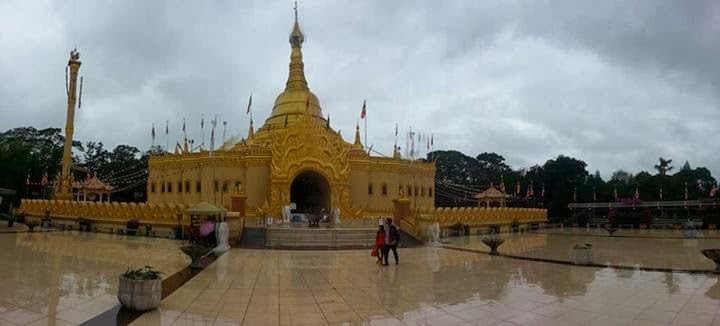 Lumbini Natural Park is a Buddhist Theravada-style temple that is similar to Shwedagon Pagoda in Myanmar located in Berastagi.
Lumbini Natural Park is a Buddhist Theravada-style temple that is similar to Shwedagon Pagoda in Myanmar located in Berastagi.
Dua Warna Waterfall is a two-coloured waterfall located in Sibolangit, around 30 km from Medan city.
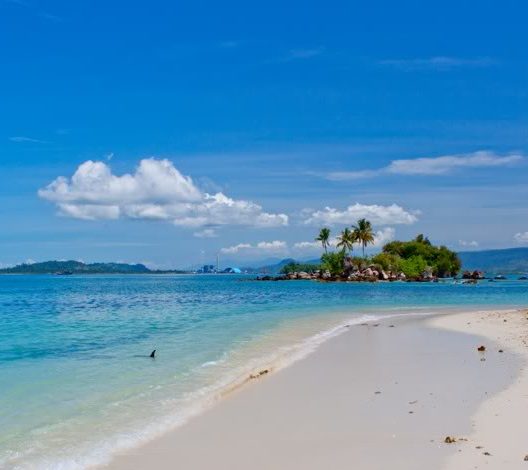 Poncan Island is a resort including a beach, located on west offshore of Sibolga city.
Poncan Island is a resort including a beach, located on west offshore of Sibolga city.
Berhala Island is a 2.5 hectares island located in the Malaka Strait near the boundary of Indonesia and Malaysia. It is a popular place for snorkeling and watching turtle nesting. Visitors can reach the island via boat from Sergei in the Serdang Bedagai regency.
Sipisopiso, one of the highest waterfalls in Indonesia, is located near Tongging in Karo regency, about 1 hour drive from Berastagi.
 Bahal temple, an ancient Buddhist monastery located in Padang Bolak, Padang Lawas Regency, around 3 hours journey with car from Padangsidempuan. The temple is believed to be constructed between the 11th to 13th century AD.
Bahal temple, an ancient Buddhist monastery located in Padang Bolak, Padang Lawas Regency, around 3 hours journey with car from Padangsidempuan. The temple is believed to be constructed between the 11th to 13th century AD.
Sigura-Gura Waterfall located in Porsea, Toba Samosir Regency, this is a waterfall that has a height that reaches 250 metres.
Tangkahan is a tourist site situated at the edge of the Gunung Leuser national park, around 20 km due north from Bukit Lawang, The main tourist draw at Tangkahan is the presence of Sumatran elephant.
Lingga is one of the village in the Karo Regency. Located at an altitude of about 1200 m above sea level, approximately 15 km from Brastagi and 5 km from the Kabanjahe. Linga is unique Karo traditional house and village that has been built an estimated of 250 years ago, but still sturdy.
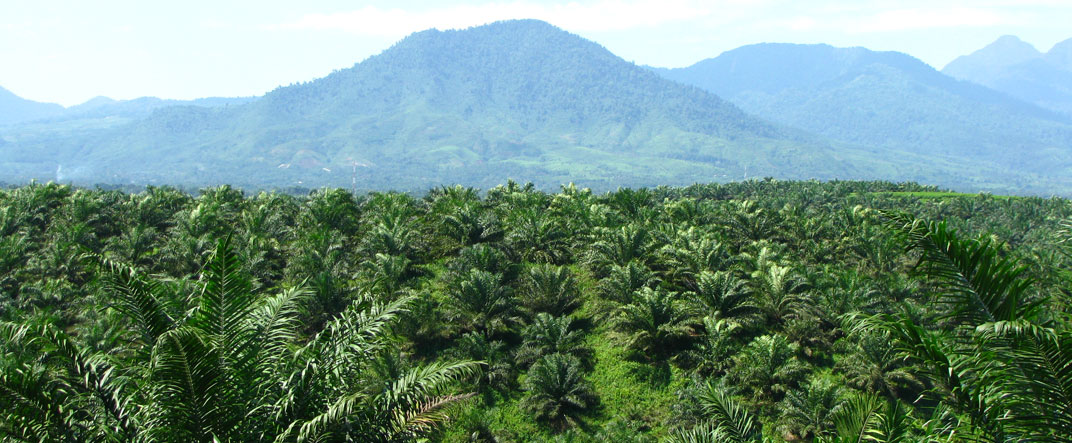 Agriculture and farming
Agriculture and farming
Inside of Palm Oil Estate of Serdang Bedagai Regency The province is famous for its plantation area, until now, the plantation economy of the province remains to be excellent. The plantations are managed by private companies and the state. SOE Plantation area is located in North Sumatra, among others PT Perkebunan Nusantara II (PTPN II), PTPN IV and PTPN III.
 Besides North Sumatra is also famous for its plantation area. Until now, the plantation economy of the province remains to be excellent. The plantations are managed by private companies also the state. North Sumatra produces rubber, cocoa, tea, palm oil, coffee, cloves, coconut, cinnamon, and tobacco. The plantation is spread in East coast area such as Deli Serdang, Serdang Bedagai Langkat, Simalungun, Asahan, Labuhan Batu, and also around west coast: Central and South Tapanuli.
Besides North Sumatra is also famous for its plantation area. Until now, the plantation economy of the province remains to be excellent. The plantations are managed by private companies also the state. North Sumatra produces rubber, cocoa, tea, palm oil, coffee, cloves, coconut, cinnamon, and tobacco. The plantation is spread in East coast area such as Deli Serdang, Serdang Bedagai Langkat, Simalungun, Asahan, Labuhan Batu, and also around west coast: Central and South Tapanuli.
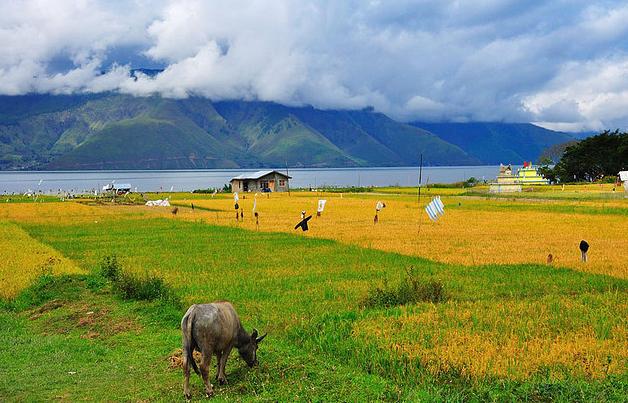 The size of rice farming. In 2005 the total area of 807.302 hectares of crops stay, or down about 16.906 hectares compared to 2004 reaching vast 824.208 hectares. The productivity of rice plants in 2005 was able to be increased to 43.49 quintals per hectare ranges from 2004 are still 43.13 quintals per hectare, and the rice crop fields change into 26.26 quintals of 24.73 quintals per hectare. In 2005, the rice surplus in North Sumatra reached 429 tons from about 1/2/27 million tonnes of total rice production in this area.
The size of rice farming. In 2005 the total area of 807.302 hectares of crops stay, or down about 16.906 hectares compared to 2004 reaching vast 824.208 hectares. The productivity of rice plants in 2005 was able to be increased to 43.49 quintals per hectare ranges from 2004 are still 43.13 quintals per hectare, and the rice crop fields change into 26.26 quintals of 24.73 quintals per hectare. In 2005, the rice surplus in North Sumatra reached 429 tons from about 1/2/27 million tonnes of total rice production in this area.
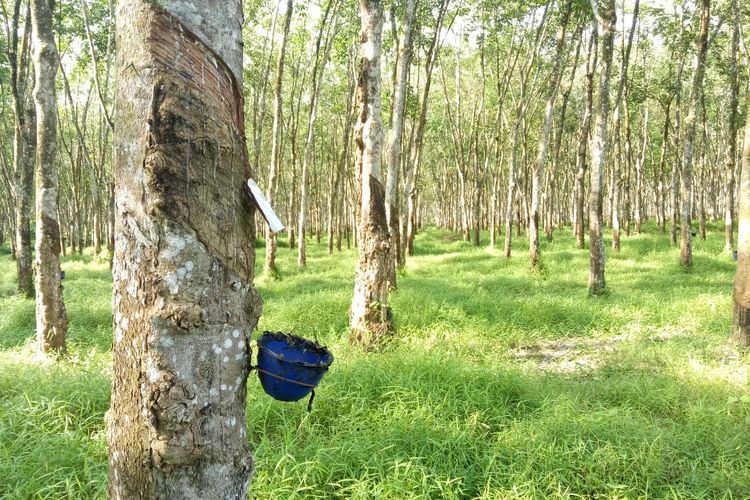 The size of rubber plantations. In 2002 the total area of rubber plantations in Sumatra is 489.491 hectares with a production of 443.743 tonnes. While in 2005, the area under rubber decreased or stayed 477,000 hectares with production also dropped to only 392,000 tons.
The size of rubber plantations. In 2002 the total area of rubber plantations in Sumatra is 489.491 hectares with a production of 443.743 tonnes. While in 2005, the area under rubber decreased or stayed 477,000 hectares with production also dropped to only 392,000 tons.
Irrigation: The size of technical irrigation entirely in North Sumatra is 132.254 ha that covers an area of 174 irrigation site. A total of 96.823 ha at 7 Irrigation area is very critical damage.
Agricultural Products: North Sumatra produces rubber, cocoa, tea, palm oil, coffee, cloves, coconut, cinnamon, and tobacco. These commodities have been exported to many countries and contributing huge foreign exchange for Indonesia. In addition to commodities, North Sumatra is also known as a producer of horticultural commodities (vegetables and fruits); e.g. Medanese Orange, Deli Guava, Cabbage Vegetable, Tomato, Potato and Carrot generated by Karo, Simalungun and North Tapanuli. The horticultural products have been exported to Malaysia and Singapore.
Kabupaten & Kotamadya

Medan
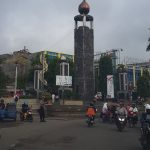
Padang Sidempuan
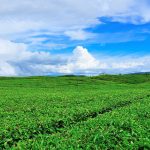
Pematang Siantar
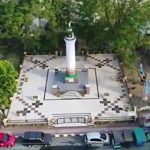
Tebing Tinggi
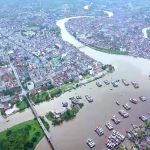
Tanjungbalai
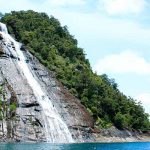
Sibolga
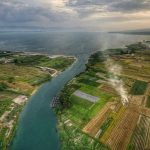
Asahan
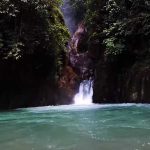
Deli Serdang
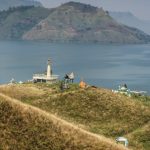
Dairi
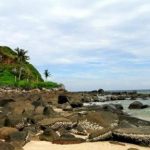
Batu Bara
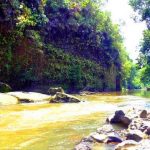
Labuhanbatu

Labuhanbatu Selatan
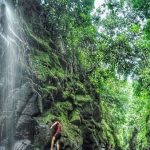
Labuhanbatu Utara
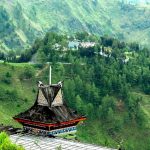
Karo

Humbang Hasundutan
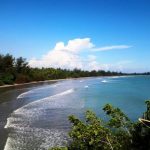
Mandailing Natal
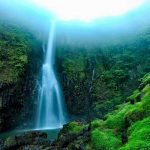
Langkat
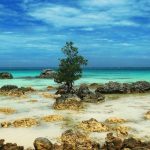
Nias Utara
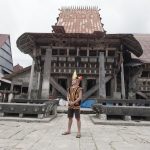
Nias Selatan
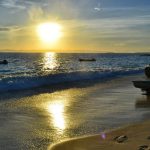
Nias Barat
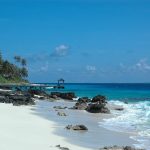
Nias
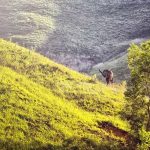
Padang Lawas Utara
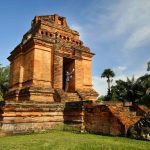
Padang Lawas
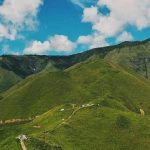
Samosir

Pakpak Bharat
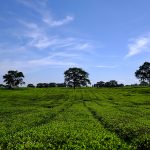
Simalungun
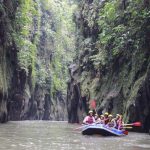
Serdang Bedagai
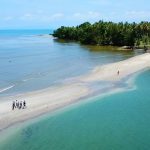
Tapanuli Tengah
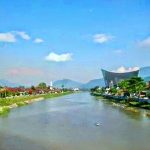
Tapanuli Utara

Tapanuli Selatan
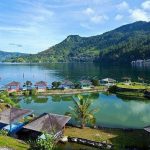
Toba

Binjai

Gunungsitoli

Medan

Padang Sidempuan

Pematang Siantar

Tebing Tinggi

Tanjungbalai

Sibolga

Asahan

Deli Serdang

Dairi

Batu Bara

Labuhanbatu

Labuhanbatu Selatan
Culinary
North Sumatra is one of the largest provinces in Indonesia with Medan as its capital city. Various ethnicities and tribes live in this province, namely ethnic Malays, ethnic Karo, and ethnic Nias. This causes the variety of culinary in North Sumatra. What are the typical foods of North Sumatra? Let’s look at the following description and explanation.
Karo Special Food.
Karo is one of the ethnic groups in North Sumatra Province. The variety of typical Karo ethnic cuisine certainly makes you curious and want to try it. Its distinctive taste and aroma will make you addicted and will definitely shake your tongue. Here is an example of a typical Karo food.
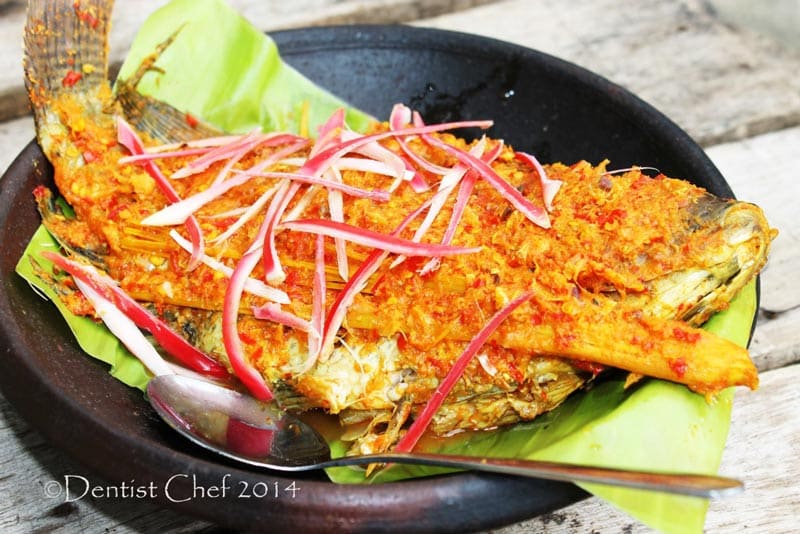 Arsik 0is one of the typical foods of North Sumatra which is made from goldfish and cooked with a variety of spices. Arsik has a delicious taste with a spicy characteristic that bites the tongue. This unique taste comes from a spice called andaliman or Batak pepper. Other spices used are cikala acid, kecombrang, and Batak onions. Arsik is one of the foods targeted by culinary connoisseurs when they come to North Sumatra.
Arsik 0is one of the typical foods of North Sumatra which is made from goldfish and cooked with a variety of spices. Arsik has a delicious taste with a spicy characteristic that bites the tongue. This unique taste comes from a spice called andaliman or Batak pepper. Other spices used are cikala acid, kecombrang, and Batak onions. Arsik is one of the foods targeted by culinary connoisseurs when they come to North Sumatra.
 Trites is a very unique traditional food of North Sumatra. Surely this food will not be found in other areas. Trites is a food made from grass that is in the intestines of cows, goats, or buffalo. But you don’t have to worry, the grass doesn’t come from the large intestines of ruminants so you don’t eat feces. This food is given spices and given gravy. This food has properties to treat stomach pain. Have a chance to try this food if you go to North Sumatra.
Trites is a very unique traditional food of North Sumatra. Surely this food will not be found in other areas. Trites is a food made from grass that is in the intestines of cows, goats, or buffalo. But you don’t have to worry, the grass doesn’t come from the large intestines of ruminants so you don’t eat feces. This food is given spices and given gravy. This food has properties to treat stomach pain. Have a chance to try this food if you go to North Sumatra.
 Kidu-kidu is one type of food that is very unique from the Karo Ethnic. This food is food with the main ingredient is sago caterpillar. Sago caterpillars that live in dead palm trees have a higher and higher amino acid content than eggs. These caterpillars are cooked until dry or crispy after cleaning first and then cooked in arsik sauce. This food is a must-try food when you come to North Sumatra if you are an extreme culinary lover.
Kidu-kidu is one type of food that is very unique from the Karo Ethnic. This food is food with the main ingredient is sago caterpillar. Sago caterpillars that live in dead palm trees have a higher and higher amino acid content than eggs. These caterpillars are cooked until dry or crispy after cleaning first and then cooked in arsik sauce. This food is a must-try food when you come to North Sumatra if you are an extreme culinary lover.
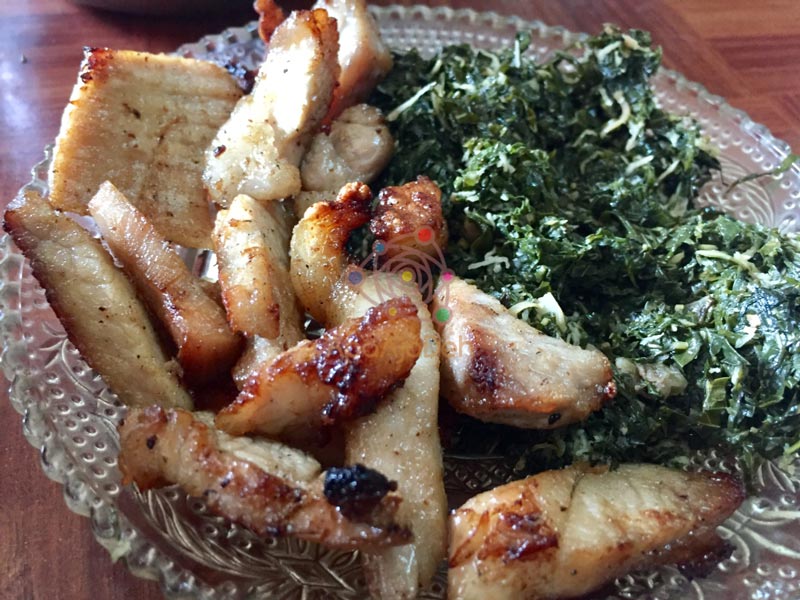 Babi Panggang Karo, Karo Roast Pork, is a typical food from North Sumatra, the famous Batak. Babi Panggang Karo or BPK is made from roasted pork slices which can then be eaten with three choices of chili sauce. The sambals are hot chili sauce, pork blood sauce cooked with pepper and chili, and a bowl of pork bone broth. fgl The savory taste of the Karo Roast Pork is very delicious when eaten with the three types of sambal. The blood sauce, which has a texture like peanut sauce, is the best and goes well with roasted pork.
Babi Panggang Karo, Karo Roast Pork, is a typical food from North Sumatra, the famous Batak. Babi Panggang Karo or BPK is made from roasted pork slices which can then be eaten with three choices of chili sauce. The sambals are hot chili sauce, pork blood sauce cooked with pepper and chili, and a bowl of pork bone broth. fgl The savory taste of the Karo Roast Pork is very delicious when eaten with the three types of sambal. The blood sauce, which has a texture like peanut sauce, is the best and goes well with roasted pork.
Saksang is a typical food of North Sumatra and the ingredients are meat such as pork, dog, or buffalo. The meat is processed by being chopped and then seasoned with spices and coconut milk. Then the meat is cooked using the blood from the slaughtered animal. The spices used for this food seasoning are onion, garlic, chili, pepper, kaffir lime, bay leaf, lemongrass, ginger, coriander, and don’t forget andaliman as a typical Karo spice. The delicious and savory taste of saksang will make you addicted.

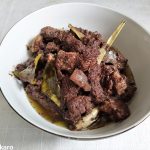
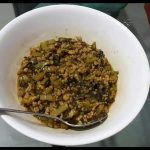
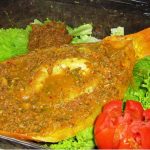
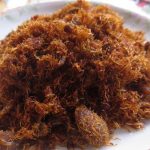
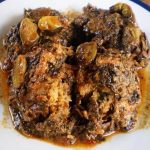

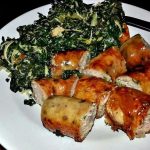
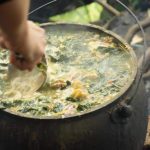












Nias Special Food
When you talk about Nias, what do you think? Surely you will remember the tradition of the Nias Tribe, namely the stone jump. It turns out that the culinary arts of Nias are interesting and rarely found in other areas. The following is a description of Nias cuisine.
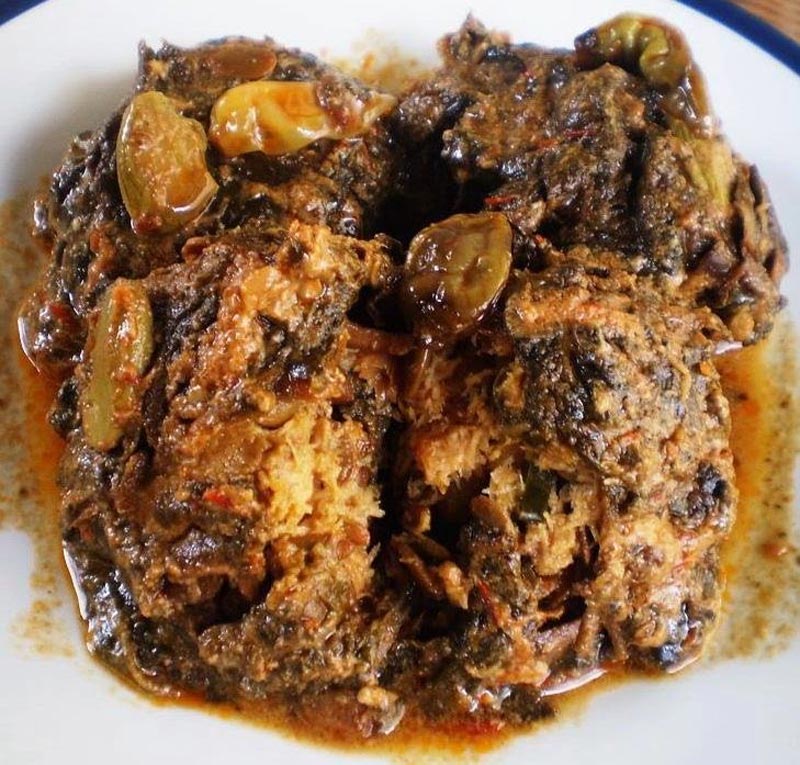 Lehendalo Nifange. As you already know, rendang is a beef dish cooked with spices. This Nias specialty rendang is very unique because it is made from taro leaves.
This Nias specialty rendang is lehendalo nifange. The way of making it is the same as how to make beef rendang with typical North Sumatran food using a variety of spices such as shallots, garlic, candlenuts, chilies, and others.
The texture of this lehendalo nifange is very soft with a black appearance like rendang.
Lehendalo Nifange. As you already know, rendang is a beef dish cooked with spices. This Nias specialty rendang is very unique because it is made from taro leaves.
This Nias specialty rendang is lehendalo nifange. The way of making it is the same as how to make beef rendang with typical North Sumatran food using a variety of spices such as shallots, garlic, candlenuts, chilies, and others.
The texture of this lehendalo nifange is very soft with a black appearance like rendang.
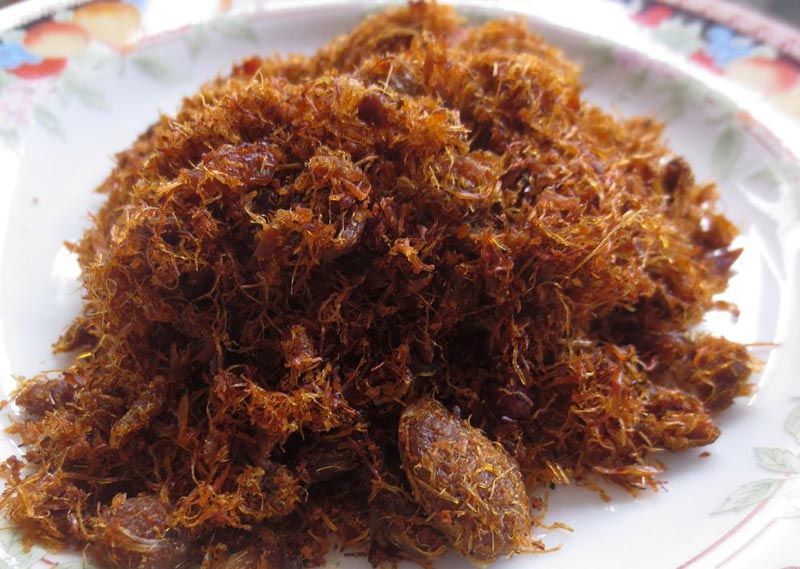 Hambae Nititi. Abon is a food that is widely spread in almost all regions in Indonesia. Abon is usually made from chicken or beef.
Did you know that there is something unique about the typical Abon Nias Island? This typical Nias Abon is called Hambae Nititi and is made from crab meat mixed with coconut milk and then cooked until dry.
Hambae Nititi has a savory taste and is usually used as a side dish. If you come to Nias you are obliged to try this food.
Hambae Nititi. Abon is a food that is widely spread in almost all regions in Indonesia. Abon is usually made from chicken or beef.
Did you know that there is something unique about the typical Abon Nias Island? This typical Nias Abon is called Hambae Nititi and is made from crab meat mixed with coconut milk and then cooked until dry.
Hambae Nititi has a savory taste and is usually used as a side dish. If you come to Nias you are obliged to try this food.
Silio Guro is a typical food of Nias Island which has similarities with Pepes. Silio Guro is made from ground beef which is then topped with grated coconut that has been seasoned and given spices and then wrapped in leaves and then grilled over coals. If Pepes in other areas use fish or chicken as the main ingredient, while Silio Guro uses shrimp meat. Silio Guro has a savory taste and is delicious when eaten with hot rice.
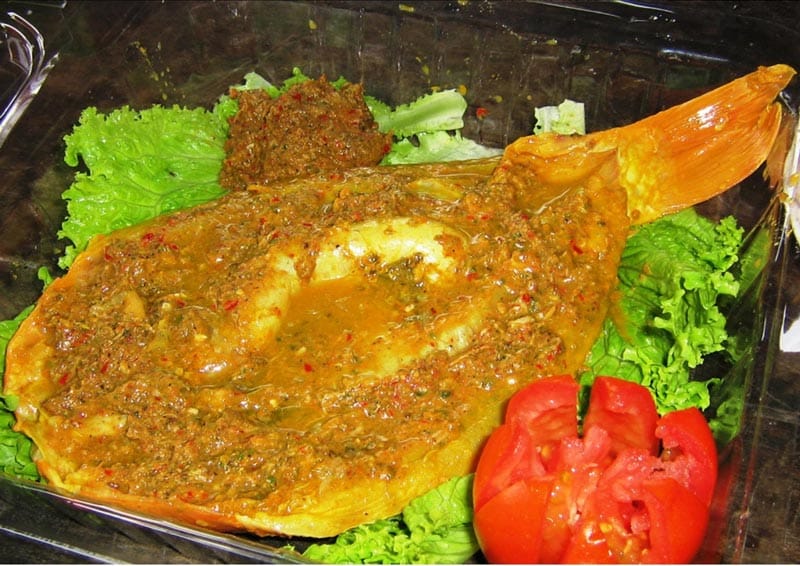 Kofo-kofo is an example of a typical North Sumatran food made from processed fish whose spines have been separated first. This food, which comes from South Nias, has two ways to process the fish. First, remove the thorns and skin then immediately fried.
The second processing, before frying, the fish is ground first and then mixed with eggs to form a round shape and then smoked. The long series will produce a delicious, special, and distinctive taste.
Please try this food if you visit North Sumatra.
Kofo-kofo is an example of a typical North Sumatran food made from processed fish whose spines have been separated first. This food, which comes from South Nias, has two ways to process the fish. First, remove the thorns and skin then immediately fried.
The second processing, before frying, the fish is ground first and then mixed with eggs to form a round shape and then smoked. The long series will produce a delicious, special, and distinctive taste.
Please try this food if you visit North Sumatra.
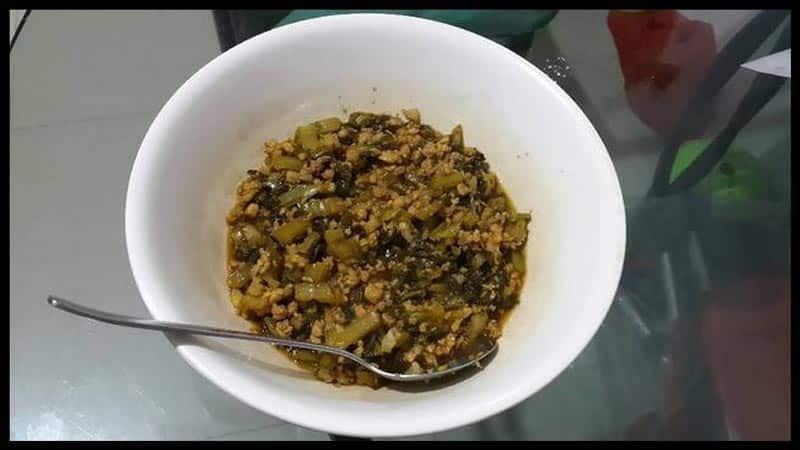 Harinake is one of the typical foods of North Sumatra that uses the main ingredient in the form of minced pork. This food is usually served to honor the in-laws on the tradition of the first visit after the wedding in Nias custom.
One pork, the meat is chopped and cut into small pieces then seasoned and usually served with rice and vegetables as a complement.
Besides being made from pork, harinake can also use fish meat. If you can’t eat pork, you can use fish to enjoy the harinake.
Harinake is one of the typical foods of North Sumatra that uses the main ingredient in the form of minced pork. This food is usually served to honor the in-laws on the tradition of the first visit after the wedding in Nias custom.
One pork, the meat is chopped and cut into small pieces then seasoned and usually served with rice and vegetables as a complement.
Besides being made from pork, harinake can also use fish meat. If you can’t eat pork, you can use fish to enjoy the harinake.
Medan Special Food
Medan consists of people with various ethnicities. The diversity of ethnicities in the city of Medan affects the variety of culture and the variety of culinary delights that exist there. Medan culinary is very appetizing and can make you salivate when you imagine it.
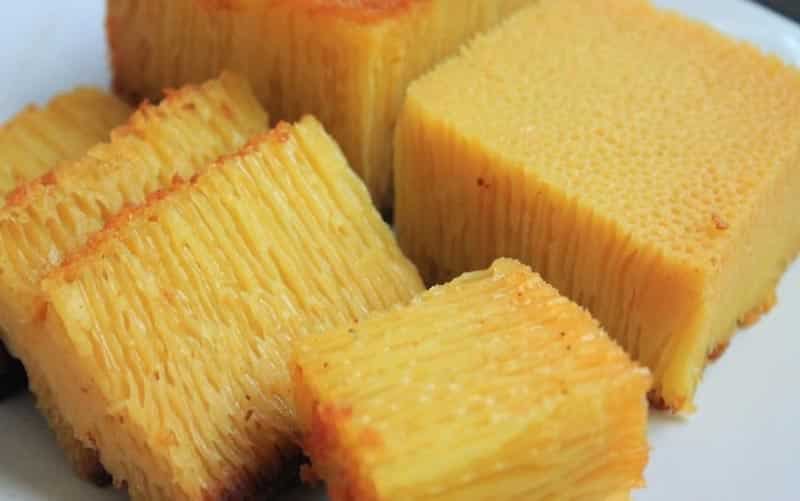 Bika Ambon is a food from Medan and not from Ambon. Why is it called Bika Ambon? The answer is because this cake is inspired by a typical Malay cake called Bika or Bika.
Then it was modified using a developer, namely sap, so that the shape was hollow as we see today. In Medan, this cake was first sold at the intersection of Jalan Ambon, Medan.
So that it becomes the Bika Ambon that we know. This North Sumatran snack is not too sweet and has a soft and chewy texture.
Bika Ambon is still delicious to eat even though it is cold. This food is very delicious when used as souvenirs and also durable.
Bika Ambon is a food from Medan and not from Ambon. Why is it called Bika Ambon? The answer is because this cake is inspired by a typical Malay cake called Bika or Bika.
Then it was modified using a developer, namely sap, so that the shape was hollow as we see today. In Medan, this cake was first sold at the intersection of Jalan Ambon, Medan.
So that it becomes the Bika Ambon that we know. This North Sumatran snack is not too sweet and has a soft and chewy texture.
Bika Ambon is still delicious to eat even though it is cold. This food is very delicious when used as souvenirs and also durable.
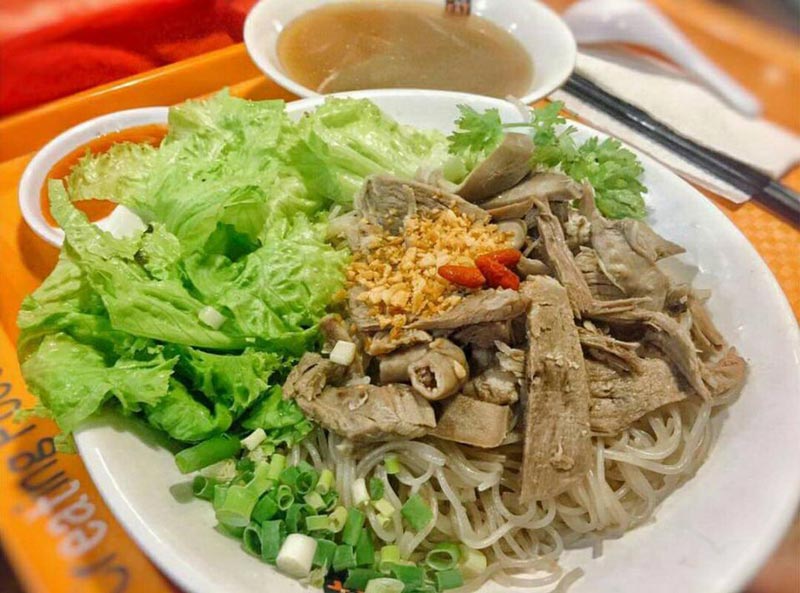 Bihun Bebek, is a Duck vermicelli,
Medan people usually call this food ak vermicelli, Ak Bihun, Ak means duck. This food is very unique and not often found in other cities. Duck vermicelli consists of vermicelli topped with sliced boiled duck, fried minced garlic, celery, and lettuce.
To add to the enjoyment, these vermicelli are then doused with duck broth boiled with other spices. Of course you can imagine the savory taste of the duck and the broth plus the aroma of spices add to the deliciousness of this dish.
Bihun Bebek, is a Duck vermicelli,
Medan people usually call this food ak vermicelli, Ak Bihun, Ak means duck. This food is very unique and not often found in other cities. Duck vermicelli consists of vermicelli topped with sliced boiled duck, fried minced garlic, celery, and lettuce.
To add to the enjoyment, these vermicelli are then doused with duck broth boiled with other spices. Of course you can imagine the savory taste of the duck and the broth plus the aroma of spices add to the deliciousness of this dish.
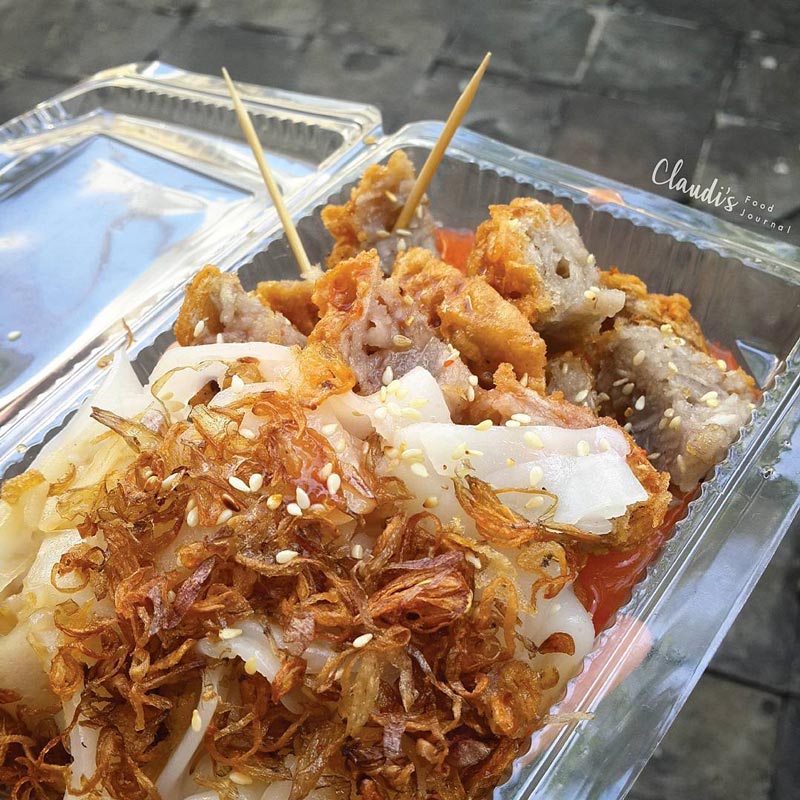 Ci Cong Fan is one of Medan’s special foods which is in the form of a sheet and is similar to kwetiau. This dish is made from rice flour and tang mien.
Tang mien is flour made from wheat starch. Ci cong fan is served with soy sauce or sweet and sour sauce and sprinkled with fried onions on top as a complement.
The unique taste of ci cong fan when eaten is guaranteed to make you addicted. Ci cong fan consists of several types, namely plain ci cong fan, meat stuffed ci cong fan, and vegetable stuffed ci cong fan.
Ci Cong Fan is one of Medan’s special foods which is in the form of a sheet and is similar to kwetiau. This dish is made from rice flour and tang mien.
Tang mien is flour made from wheat starch. Ci cong fan is served with soy sauce or sweet and sour sauce and sprinkled with fried onions on top as a complement.
The unique taste of ci cong fan when eaten is guaranteed to make you addicted. Ci cong fan consists of several types, namely plain ci cong fan, meat stuffed ci cong fan, and vegetable stuffed ci cong fan.
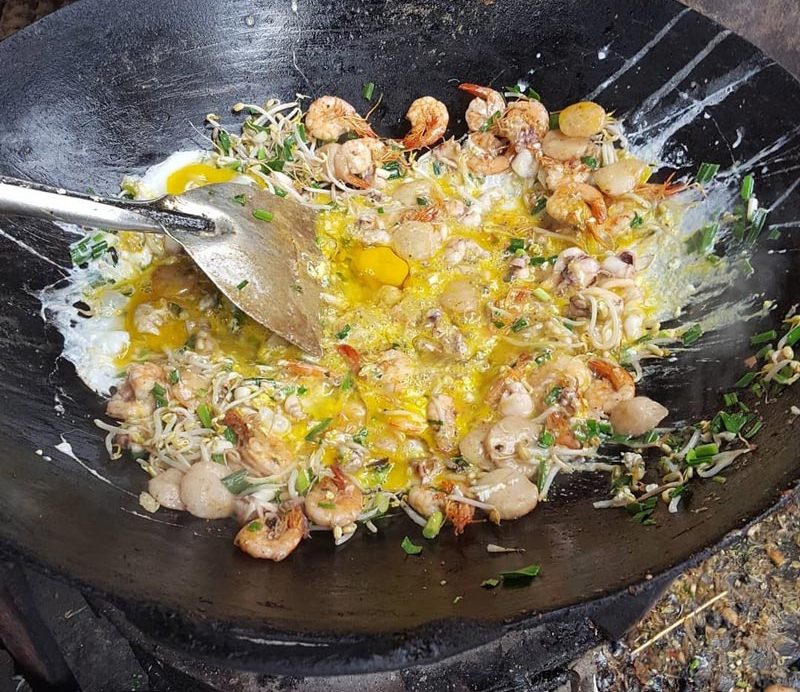 Mie Balap. If Lombok has Nasi Balap, Medan has Mie Balap. This food is named racing noodles because the way it cooks is very fast, like being in a race.
These noodles can be cooked in just five minutes. Because of its lightning fast manufacture, this noodle is often used as a menu for breakfast.
The aroma of this noodle is very fragrant because it is cooked on the stove. In this dish, we will get noodles mixed with bean sprouts, omelette, sliced leeks, celery leaves, and cayenne pepper for spicy lovers.
Mie Balap. If Lombok has Nasi Balap, Medan has Mie Balap. This food is named racing noodles because the way it cooks is very fast, like being in a race.
These noodles can be cooked in just five minutes. Because of its lightning fast manufacture, this noodle is often used as a menu for breakfast.
The aroma of this noodle is very fragrant because it is cooked on the stove. In this dish, we will get noodles mixed with bean sprouts, omelette, sliced leeks, celery leaves, and cayenne pepper for spicy lovers.
Kacang Sihobuk, or Peanut Sihobuk is a typical Medan snack, precisely from Tarutung Village. This bean is very unique because the way of cooking it does not use cooking oil. These beans are made by frying with sand. Peanuts produced by Sihobuk Village are processed by soaking the beans for 3-5 hours then drying them to dry and then cooking them with sand using firewood. These beans have a distinctive savory taste and large size. Usually Sihobuk Beans are used as souvenirs from Medan.
Mandailing Natal Special Food
Mandailing Natal is one of the districts in North Sumatra. Mandailing Natal has various and unique culinary delights, this is the description of the culinary origin of Mandailing Natal.
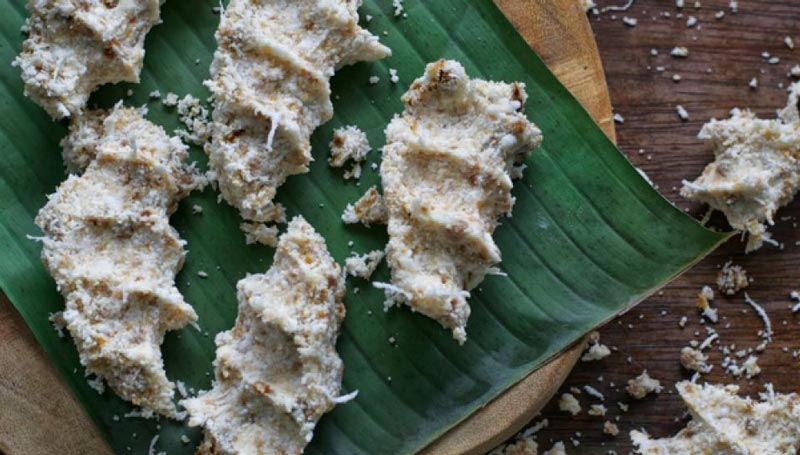 Itak poul-poul means flour that is clenched. This snack is a sweet snack or cake made from rice flour topped with grated coconut, brown sugar, and a little salt.
This cake has a sweet and savory taste and is very suitable as a light snack because of the shape and size of itak poul-poul which can be devoured with one bite.
This snack is very delicious and is a sought after cake when tourists come to Mandailing Natal.
Itak poul-poul means flour that is clenched. This snack is a sweet snack or cake made from rice flour topped with grated coconut, brown sugar, and a little salt.
This cake has a sweet and savory taste and is very suitable as a light snack because of the shape and size of itak poul-poul which can be devoured with one bite.
This snack is very delicious and is a sought after cake when tourists come to Mandailing Natal.
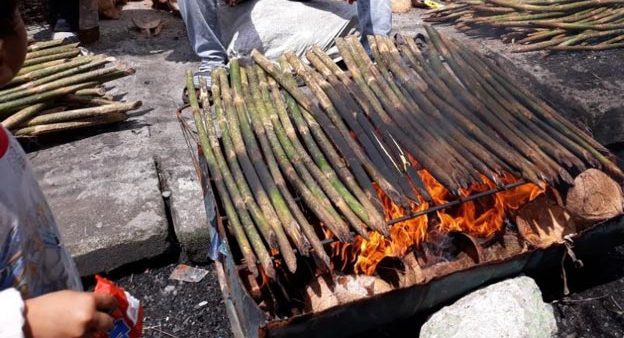 Pakkat, or rattan shoots are snacks from Mandailing Natal with the main ingredient of course rattan shoots. This dish is a simple dish to make.
Burnt rattan shoots are eaten with raw chili sauce. The taste you get is a delicious taste with a burnt aroma and don’t forget the spiciness of the chili adds to the deliciousness of this dish.
Pakkat, or rattan shoots are snacks from Mandailing Natal with the main ingredient of course rattan shoots. This dish is a simple dish to make.
Burnt rattan shoots are eaten with raw chili sauce. The taste you get is a delicious taste with a burnt aroma and don’t forget the spiciness of the chili adds to the deliciousness of this dish.
Sambal Kantori Joruk is a unique chili sauce originating from Mandailing Natal. Its uniqueness comes from the materials used. The ingredients used to make this sambal are anchovies and durian. The durian used is not fresh durian but durian that has been fermented. The unique taste and distinctive aroma of durian and the savory taste of anchovies will make the audience addicted.
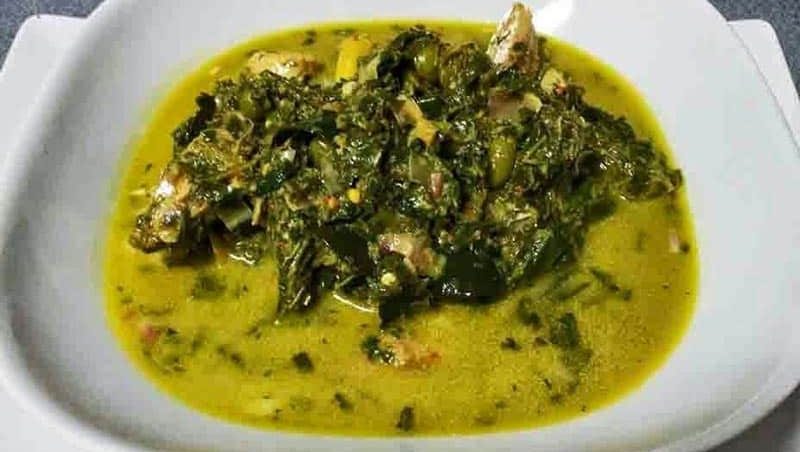 Gulai Bulung Gadung, or Bulung gadung curry is a food made from cassava leaves. This typical Mandailing Natal food consists of cassava leaves, coconut milk and added spices.
The savory coconut milk and the soft texture of the cassava leaves are perfect when used as a side dish and eaten with hot rice. Don’t forget to try this gule bulung gadung if you visit Mandailing Natal.
Gulai Bulung Gadung, or Bulung gadung curry is a food made from cassava leaves. This typical Mandailing Natal food consists of cassava leaves, coconut milk and added spices.
The savory coconut milk and the soft texture of the cassava leaves are perfect when used as a side dish and eaten with hot rice. Don’t forget to try this gule bulung gadung if you visit Mandailing Natal.
Sale Fish Curry. Fish curry is a type of food that is commonly found in many areas in Indonesia. However, this curry from Mandailing Natal is a unique fish curry. Before making curry, the fish is smoked first to dry. The type of fish chosen is also river fish to produce a more savory taste. The aroma of smoking will add to the rich taste of this sale fish curry. Are you interested in trying?
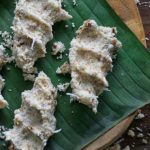
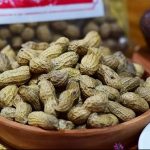
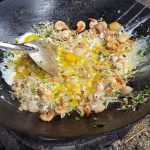
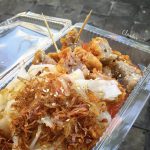
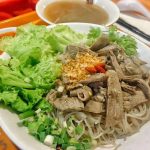

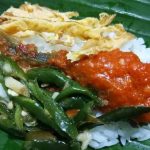
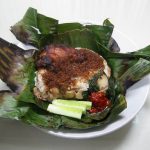
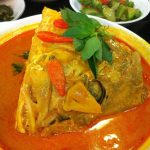
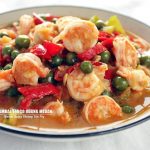
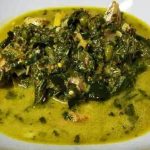
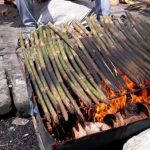












Deli Serdang Special Food
Each region has its own unique cuisine. Likewise, Deli Serdang Regency also has a culinary that is no less unique than other regional cuisines. Please refer to the following description to better understand the culinary of Deli Serdang.
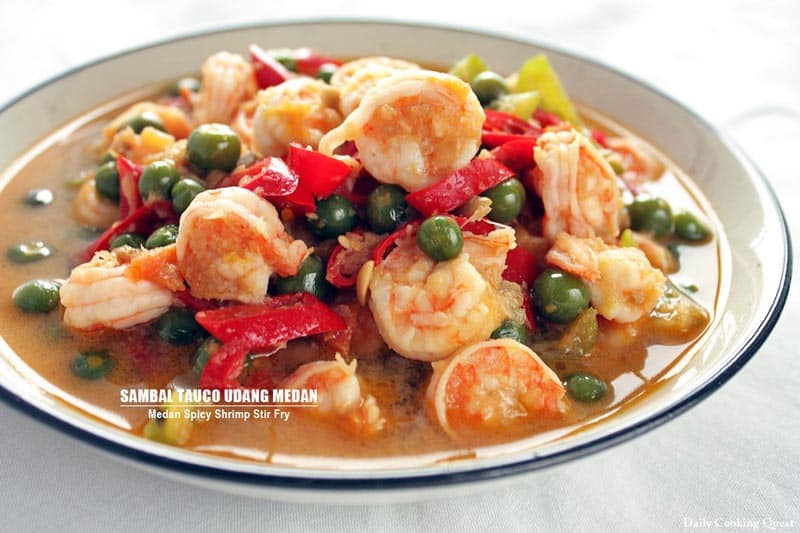 Udang Tauco. This food menu is a food that is the mainstay of Deli Serdang. Shrimp tauco is a sought-after food if tourists visit Deli Serdang.
Tauco which is the prima donna is the ingredient used to cook shrimp as the main ingredient in this dish.
The spices in the tauco shrimp are kecombrang, tomatoes, and green chilies. The distinctive smell of kecombrang will add to the taste of this dish. Don’t forget to taste this food when visiting Deli Serdang.
Udang Tauco. This food menu is a food that is the mainstay of Deli Serdang. Shrimp tauco is a sought-after food if tourists visit Deli Serdang.
Tauco which is the prima donna is the ingredient used to cook shrimp as the main ingredient in this dish.
The spices in the tauco shrimp are kecombrang, tomatoes, and green chilies. The distinctive smell of kecombrang will add to the taste of this dish. Don’t forget to taste this food when visiting Deli Serdang.
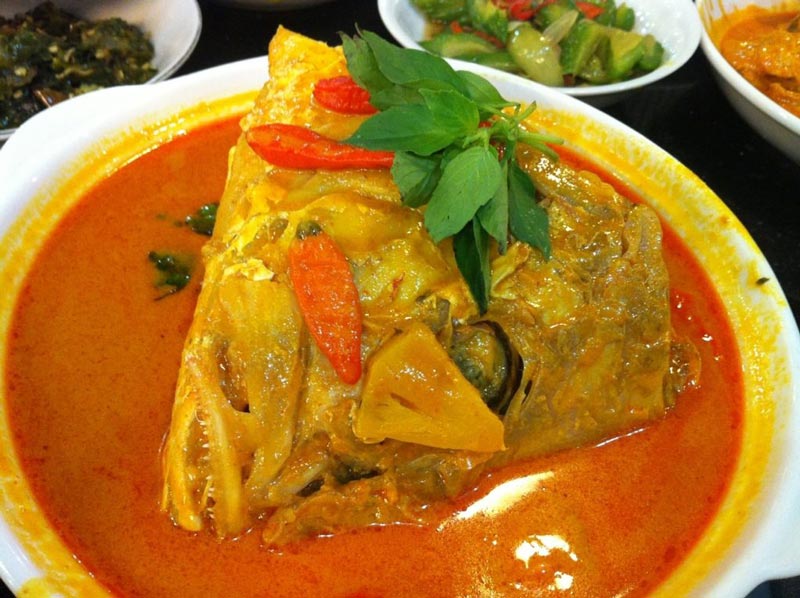 Gulai Masam. This typical sour curry from Deli Serdang does not mean the curry is stale. However, this curry is a curry with a sour taste that is obtained from vegetable starfruit.
This curry is made from grouper fish or catfish with coconut milk sauce. The combination of savory coconut milk and sour starfruit makes this food a fresh choice to eat or serve as a side dish with hot rice.
Gulai Masam. This typical sour curry from Deli Serdang does not mean the curry is stale. However, this curry is a curry with a sour taste that is obtained from vegetable starfruit.
This curry is made from grouper fish or catfish with coconut milk sauce. The combination of savory coconut milk and sour starfruit makes this food a fresh choice to eat or serve as a side dish with hot rice.
Bubur Pedas. As can be guessed from the name, this porridge has a spicy taste. Unlike the usual porridge served with cakwe, chicken, and boiled egg, this Deli Serdang spicy porridge is served with sliced vegetables and sometimes comes with sliced chicken or shrimp. In addition, this porridge is also equipped with bean sprouts. The spicy taste the first time you try it may feel strange. But you will be addicted if you have tried it.
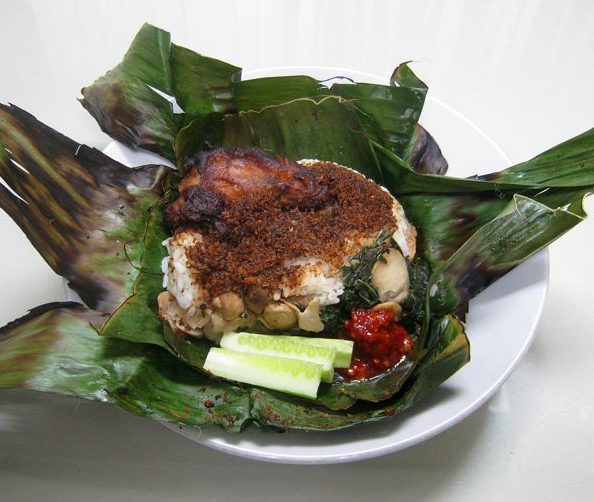 Nasi Bakar Sombang. This grilled rice is one of Deli Serdang’s specialties. This dish contains rice, small anchovies, and mogap chicken with green chili sauce. Mogap chicken is the prima donna in this dish.
The delicious taste of Mogap chicken and also arousing the taste will make you addicted and want to eat this grilled rice when you visit Deli Serdang. Don’t forget the taste of the burnt rice that adds to the enjoyment of this food.
Nasi Bakar Sombang. This grilled rice is one of Deli Serdang’s specialties. This dish contains rice, small anchovies, and mogap chicken with green chili sauce. Mogap chicken is the prima donna in this dish.
The delicious taste of Mogap chicken and also arousing the taste will make you addicted and want to eat this grilled rice when you visit Deli Serdang. Don’t forget the taste of the burnt rice that adds to the enjoyment of this food.
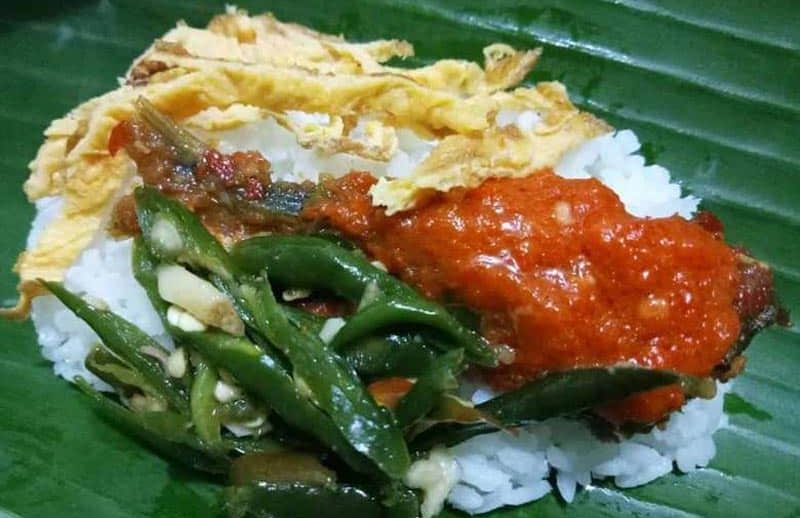 Nasi Perang, or War Nasi is rice wrapped in leaves and has been equipped with side dishes in it. In Java this type of rice is commonly called cat rice.
You will find a lot of this food when you visit Deli Serdang. The fragrant and delicious aroma of banana leaves will seep into the rice plus the spicy chili sauce and the savory side dishes are suitable for breakfast, lunch or dinner.
That’s a description of the foods that exist in North Sumatra. Starting from Karo specialties, Nias specialties, Medan specialties, Mandailing Natal specialties, to Deli Serdang specialties which have their own uniqueness and enjoyment.
Nasi Perang, or War Nasi is rice wrapped in leaves and has been equipped with side dishes in it. In Java this type of rice is commonly called cat rice.
You will find a lot of this food when you visit Deli Serdang. The fragrant and delicious aroma of banana leaves will seep into the rice plus the spicy chili sauce and the savory side dishes are suitable for breakfast, lunch or dinner.
That’s a description of the foods that exist in North Sumatra. Starting from Karo specialties, Nias specialties, Medan specialties, Mandailing Natal specialties, to Deli Serdang specialties which have their own uniqueness and enjoyment.
